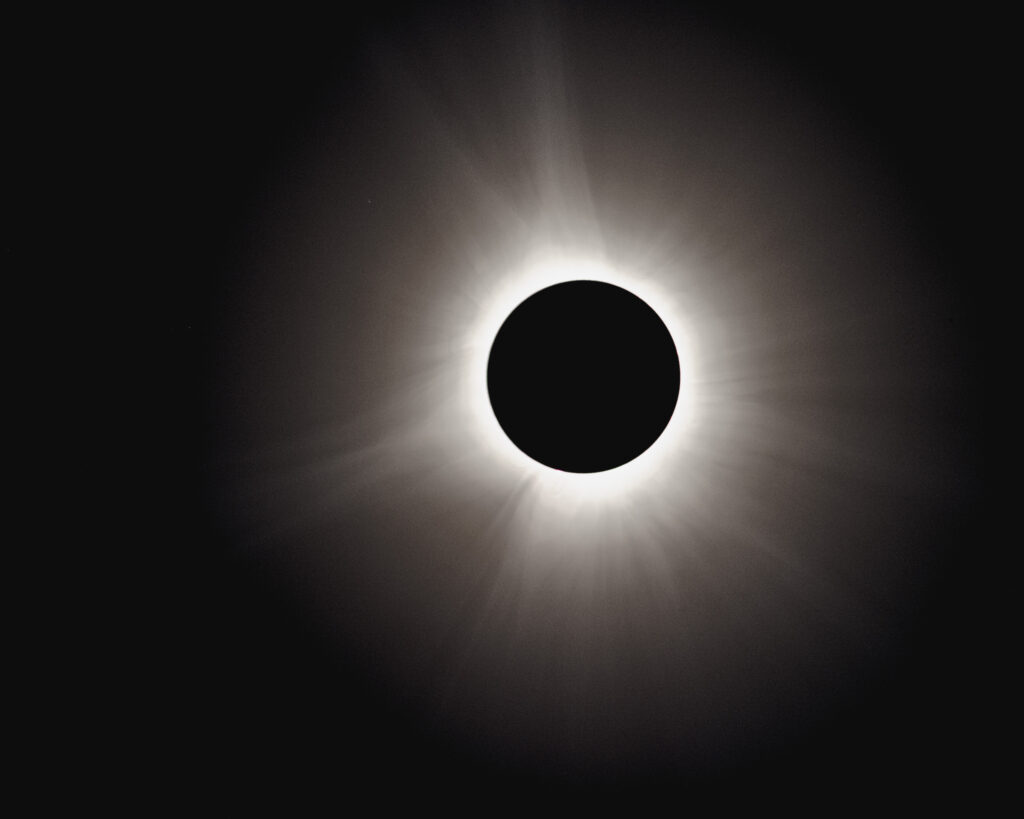Total eclipses are not of course unheard of. What made this one special was that the distance between earth and moon was near its closest point:
The magnitude of an eclipse, or the ratio of the angular diameter of the Moon to the angular diameter of the Sun, must be one or greater for a total eclipse to occur. The Moon was near perigee (the closest point in its orbit to Earth) during this eclipse. As it was closer than average, it appeared larger than its average size in the sky. The Sun had an angular diameter of 31’56” at the moment of greatest eclipse. As the magnitude of this eclipse at that time was 1.0566, the angular diameter of the Moon was 1.0566 times that of the Sun, or 33’44”. This gave the eclipse a wider path of totality and more maximum time in totality (4 min 28 s) compared to the total eclipse in 2017 (2 min 40 s), which had a magnitude of 1.0306.
Wikipedia
The result was some spectacular images, which I covered in more detail elsewhere.

[1] Wikipedia contributors. 2024. “Solar Eclipse of April 8, 2024.” Wikipedia, The Free Encyclopedia. May 3, 2024. https://en.wikipedia.org/w/index.php?title=Solar_eclipse_of_April_8,_2024&oldid=1221990257.

Leave a Reply